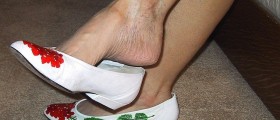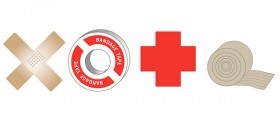
What are varicose veins?
Varicose veins are veins that are swollen and enlarged. They are usually a darker color than regular veins, usually blue or dark purple going on black. They can also be very bulging and lumpy to the touch and look twisted, like lines on a map, perhaps.
They occur when the small valves that are located inside the veins stop working properly. The way a good and healthy vein works is that it allows blood to pump very smoothly all the way to the heart and back, therefore, there is no blood flowing backwards. This works, because of the tiny valves, that open and close and do not let the blood through.
However, when these valves are damaged or made weak in some way, the blood will start to flow back and eventually begin to collect inside the being. When this occurs, varicose veins are formed.
It is a very common condition, however, and women tend to have more problems with varicose veins than men do.
In fact, as much as 30 percent of all women will develop them eventually. The percentage for men is half of that, 15 percent.
Even though they are rather ugly to look at, varicose veins do not present that great of a health problem to most people. However, sometimes complications will occur.
Even if they do occur, most of the time, no treatment will be needed.
However, sometimes complications can occur that will cause severe amounts of aching and swelling in the legs.
Another complication can be even more unsightly skin discoloration and increasing pain. In these instances, something will probably have to be done about the complications. Complications
One of the most common complications of varicose veins is bleeding. Varicose veins that form near the surface of the skin can something begin to bleed, especially if the person suffers some kind of injury to the leg, such as a cut or a scratch.
The person will also find that it can be very difficult to stop the pain. The best thing to do is to lie down and to raise the leg, and it is also important to apply direct pressure to the injury in order to make it stop bleeding.
If it does not stop bleeding in a reasonable amount of time, the person needs to go see a doctor.
Chronic venous insufficiency is also another possible complication.
If the blood is not flowing properly, this can interfere with the way in which the skin exchanged oxygen, nutrient and waste products with the blood.
When this disruption occurs for a longer period of time, it is called chronic venous insufficiency and it can lead to other conditions such as varicose eczema, in which the skin becomes red and flaky, with blisters and unsightly crusts on the skin.

















Your thoughts on this
Loading...